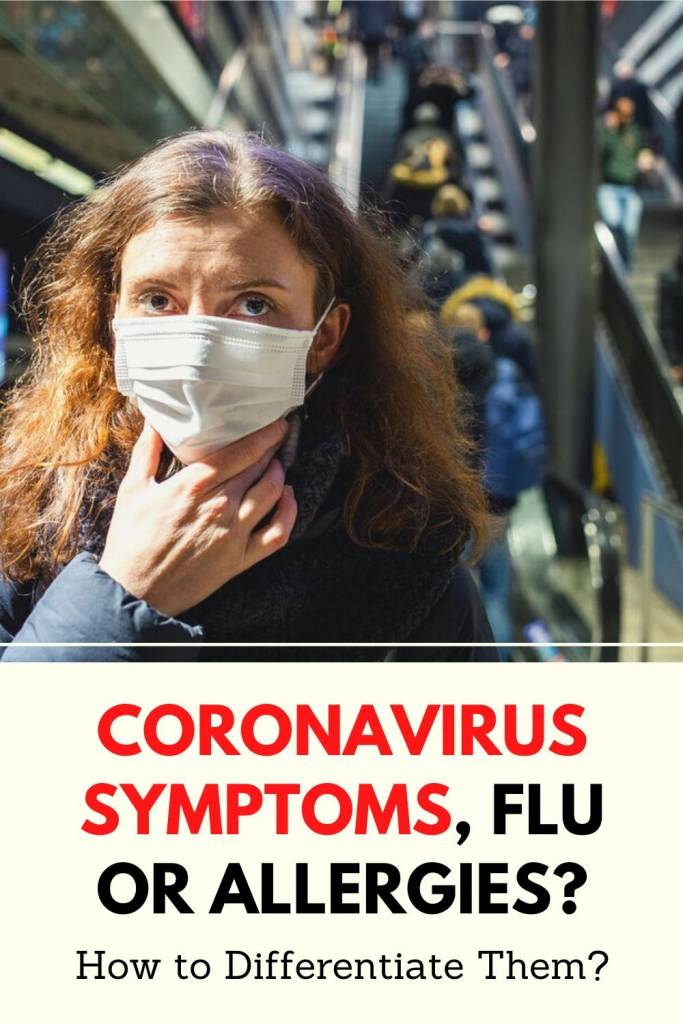Since coronavirus symptoms are similar to those of the flu, it is logical to ask what the differences with other viral diseases and seasonal allergies are. Find out all about this.
The spread of the coronavirus in the world, under the virotic form of COVID-19, has the planet on edge. Both the States of the countries and the general population consider how to differentiate the symptoms, regarding the flu, to know when to mobilize efforts and when not.
The increase in the number of cases, which already exceeds 120,000 infected, jeopardizes the response capabilities of health systems. Since the coronavirus spreads rapidly, even if it does not have a high lethality, it leads to frequent consultations and the occupation of hospital beds in a short time.
The idea of the action protocols is to differentiate between suspected cases, cases that must be isolated, patients who require hospitalization and those who could continue home isolation. We must remember that, although it does not seem by the news, other diseases continue to exist, such as the flu or allergies.
We are going to see in more detail what the signs of each are to have a general panorama that guides you, and thus make you able to differentiate between allergy, influenza or coronavirus symptoms.
Coronavirus symptoms
COVID-19 infection, in the current global outbreak declared a pandemic by the World Health Organization (WHO), is characterized by 3 main symptoms:
- Fever
- Dry cough
- Exhaustion
In some cases, diarrhea, abdominal pain, odynophagia – sore throat – and rhinorrhea – runny nose have been added. As we can see, the symptoms are quite nonspecific and can be confused with other pathologies. It is also true that not all COVID-19 positive patients have all the signs.
Coronavirus symptoms are nonspecific and can be confused with influenza symptoms.
Flu symptoms
Flu is a disease caused by the influenza virus and its strains. The cases of influenza syndromes that recur every year respond to seasonal flu associated with winter weather. On the other hand, from time to time specific epidemics appear due to the mutation of the influenza virus, such as influenza A.
The symptoms of seasonal flu are:
- Fever
- Cough
- Sore throat
- Shortness of breath
Tiredness or exhaustion is very characteristic of the influenza virus. Our flu-like body has serious difficulties to move, to carry out daily activities and to get out of bed. The flu forces rest, even when we want to continue with our normal daily lives.
Allergy symptoms
The respiratory allergy that many suffer in autumn and spring times is much milder in its symptoms than the flu and the coronavirus, in addition to tending to be located in the upper respiratory system. The allergy, in addition to the nose, attacks the eyes.
The signs of being affected by an allergy are usually:
- Rhinorrhea: runny nose
- Sneezing
- Eye tearing
Erythema on the tip of the nose: it is the reddish coloration that takes the skin in that area due to irritation
It should be noted that in allergy the symptoms are mild and persistent. Although a dry cough may appear in the form of paroxysmal accesses, it does not have the intensity of the flu, for example. And tiredness or exhaustion in no way resemble that of viral infections.
How to differentiate allergy from influenza and coronavirus?
First, the flu and the coronavirus have similar symptoms, and the intensity of the signs is similar as well. This makes it difficult to differentiate between one virus and the other. The point of dissent is what we know as an epidemiological link.
The epidemiological link is the contact that a person may have had with someone infected. Thus, to suspect coronavirus, the meeting point of the person with fever must be traced, for example, with COVID-19. It may be because he traveled to a geographical area with circulation of the virus or because he shared time with a positive case.
As for allergy, it is easier to tell the difference. Symptoms tend to be mild and primarily on the face, with no systemic involvement. In addition, they respond to specific stimuli, such as the season –spring and autumn- and the presence in the environment of substances.
When in doubt, the doctor always has the last word. It is important to consult to clear concerns, especially if there you have a fever. Some tests available at health centers can identify the coronavirus relatively quickly.
And the fact that it’s not coronavirus, and it is seasonal flu, doesn’t take away its severity, either. In immunocompromised or chronically ill patients, influenza influenza is as or more dangerous than coronavirus and should be treated with rigor.
Don’t forget to SHARE the coronavirus symptoms and help people differentiate them from flu and allergies!

